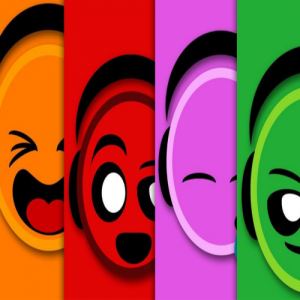Learning something new is never easy. To aid the Salsa learning process instructors use training wheels to remove fear, and uncertainty and to provide a safe and predictable framework for learning. However, eventually, this can act as a restricting chain which must be broken for the sake of your dancing.
In this post, I will highlight some of the training wheels used in Salsa, highlight their purpose and talk about the ways and reasons for breaking free. I will also talk about why instructors would like to turn these training wheels into chains.
Counting
A lot of people in the Salsa world have not listened to Salsa music before and musical induction could be tough and off-putting for a lot of new dancers. This is why Eddie Torres put forward a system of counting. This has been tremendously successful and is the dominant way of teaching Salsa today. This system is to teach beginners to step to certain counts over eight beats (two bars of four). This translates to stepping on 123, pausing on the 4, and stepping on the 567 with a pause on count 8.
Although this provides a framework for dancing Salsa, sticking to this will not enable you to prepare your mind and body for the exploration of the rich rhythms within Salsa and Latin music – most of which have an emphasis between beats or is syncopated.
Tip: Start listening to the underlying rhythms in Salsa, tap those rhythms and explore ways of expressing and moving to them. Start off with Cowbells, move to Congas, give the Timbales a try and see what you come up with.
Partnerwork
The Salsa world is fixated with turn patterns or partner-based sequences of moves. Learning these patterns gives us our vocabulary for communication and exploring sentences in a partner dance i.e. an agreement and protocol between two people.
This is an essential part of the learning process as we build more vocabulary but after a while, it is the equivalent of learning endless Confucius quotes. Some instructors like to use this as a selling technique to keep you learning endless routines. Once you have a big enough vocabulary and have seen enough it is time to take off these training wheels and start trying to write phrases and stories.
Tip: Once you know enough words and have seen many examples of how they can be combined you can start the process of putting these words together yourself. This is the creative process with the music and your partner as the subject matter. Like most first-time novelists your first attempt might suck, but that is OK, the main thing is to try.
Footwork
Learning footwork is more important to Salsa than most people give it credit for. It is not just about learning an endless sequence of moves but training your body to move to different rhythms.
Learning a variety of footwork will enable you to navigate the dance floor in a more colourful way but like partner work, there will be a time when you will need to explore your own movement and see what feels right for you and to start creating.
Tip: Listen to Salsa music and ask yourself how a particular rhythm makes you feel. Try blending moves or taking things that you have seen and incorporating that into your dancing. This does not need to be intricate but something that appeals to your body.
Layering
Many instructors mention, to my eternal despair, that there is a time for partner work and a time for footwork. While this is good at the start to help you clean and refine your technique but this approach to dancing becomes regimented and predictable.
Blending all the different elements of Salsa is like using the key of a piano and playing many different songs or mixing together loads of different spices to make a unique flavour. By blending partner work, footwork, body movement and a host of other elements you can create something uniquely yours.
Tip: do not separate your dancing into sections. Try to do a partner work pattern and incorporate elements of your footwork class to make something uniquely yours.
Chaining
Most instructors will agree with the statements above but as Salsa has become more commercial it is not in their best interest to take off those training wheels and give you independence. Some instructors will turn these training wheels into chains by teaching you just enough so that you are comfortable in their environment, keep you in training wheels by continually pushing you into new products and giving you new training wheels, or making you scared of the outside world by telling you that you need more training. I will go as far as saying that some teachers don’t teach you much at all.
Tip: Compare your own progress to the wider Salsa community and not just your local teachers or schools. Be suspicious when being aggressively sold on amazing shiny new products that will make your dancing better, only see the students of that school.
Summary
Training wheels do have a good purpose in Salsa but there is a time when you will need to let go and, for me, this is the moment you become a dancer.
I hope you have found this article interesting. What are your personal experiences? Are you still wearing training wheels? Please share your comments below.




